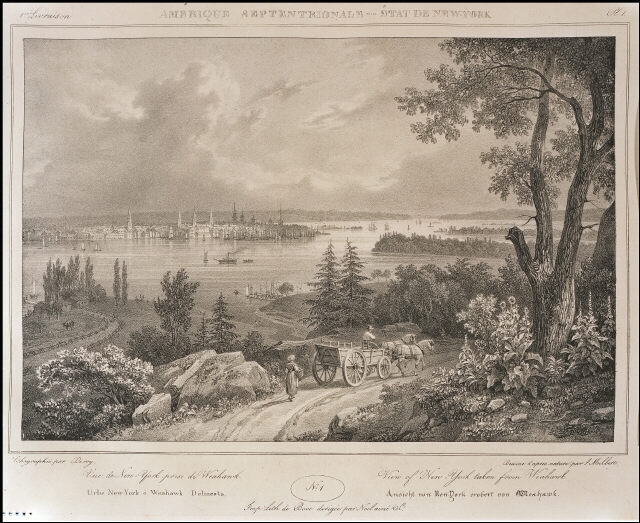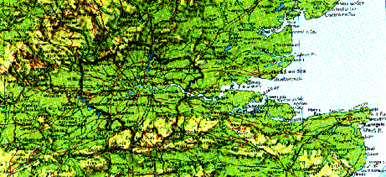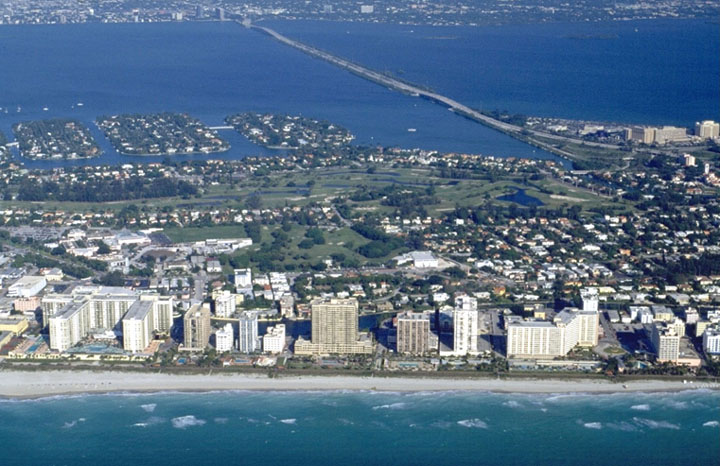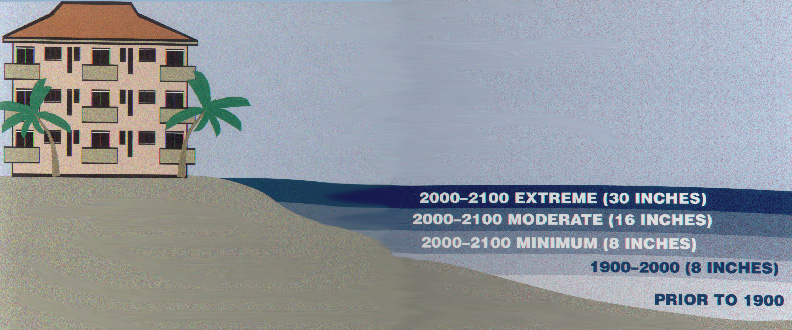"The creation of a seaside agrarian environment..."
The value of coastal marshes to the productivity of estuaries, or river mouths,
"The creation of a seaside agrarian environment..."
Colonial settlements used marshes for grazing and plantation crops demanded wharfage facilities in tide lands
Thomas Gilpin -- Quaker merchant, as an example of canal financier -- one who invested in building canals to promote commercial transport of farm products, timber and coal to the coastal cities.Science made practical through application influenced American attitudes.The sheer size of Atlantic seacoast swamps were larger than Europe's
Canals were limited by expertise and capital.
Chesapeake and Delaware Canal.
Middlesex Canal in Boston.
Benjamin Rush and the Yellow Fever epidemicUrban commercial development and agricultural expansion ran counter to Seybert and were was typical of early American attitudes about how to utilize natural conditions for profit and community access.Carl von Linne and the idea of a balance of natural harmonies
American Philosophical Society's meetings on the drainage and healthy transformation of swamps.
Dr. Adam Seybert, contrarian view that bad air and bad places like marshes are needed to balance out good places.
Marshes as repositories of a balancing element, though unknown.
The necessity of marshes was eclipsed by dredging and reclamation.
"The creation of a seaside agrarian environment..." means that agricultural uses of the coastal wetlands dictated drainage policies and the development of tidal water power for milling.
"Even prior to The nineteenth century The necessity of marshes was disregarded in favor of a continued reliance on estuarine dredging and coastal reclamation. As The image of The garden symbolized The eighteenth century intellectual recognition of humanity's role in taming and cultivating wild landscapes, The creation of a seaside agrarian environment encouraged The replacement of swamps and marshes with diked meadows or farmlands. Urban growth, too, fostered dumping, drainage canals, wharves and commercial shoreline development. As diseases repeatedly swept The crammed and dingy tidewater cities, The pastoral image of The garden became a paramount influence on scientists and writers, relegating noxious and obstructing coastal wetlands to a role as inefficient backwaters."33
The Legacy of The Seashore Naturalists.
"Tidelands, however, represented a complex problem of public administration depending on The coastal territory in question. The proprietary responsibility for these wetlands that had existed in The colonies was derived from The crown, to be held in perpetual trust for The promotion of navigation and The public privileges of fishing and hunting."
(p. 39.)
U.S.
Land System, 1785, and Jeffersonian rationalism.
Swamplands Acts made reclamation a national priority by grants to states.
Reclamation means to reclaim land and that meant the recovery of submerged land (or any other land) by filling in wetlands with earth, refuse, or debris to form higher land, or the use of levees to surround the wet lowlands to keep the water away and change these moist areas into dry land for farming, grazing, orchards, or habitation.
In the arid (very dry) west reclamation meant brining scarce water to desert lands in order to irrigate the farms, orchards and fields.
Free land was eventually available to settlers in the west due to The Homestead Act.
Why then was land reclaimed in coastal areas?
Marshes were seen as areas of bad or impure air and hence the disease of malaria (mal + aria; bad or unhealthy + air) was blamed on undrained and low lying swamps
Review of Chapter Three's main points:
"drainage and dredging costs" reduced by steam engines.
Protection of navigation becomes paramount to promote commerce.Agrarianism is the belief in the supremacy of the rural life, the farmer as the sustaining timbers of democracy, as opposed to merchants or soldiers.
ethos of Jeffersonian democracy was small government, protecting property, limited commercial improvements, sponsored exploration and navigation improvements
Artists, writers and naturalists began to agitate for the value of coastal ares, particularly cliffs and rocky promontories as sanctuaries with scenic value.
From Nexus to terminus in less than a century.

Estuaries are unseen treasuries.
Decline of the clam, alewife, oyster, shad and salmon fisheries.
E. I. Dupont and the value of causeways across marshes for transportation.
Jefferson was the author of this land ordinance to help settle the Ohio Valley (northern shore) in a more orderly and rational fashion that would allow the government to get land into the hands of farmers.
Land Ordinance of 1785 legitimated surveys and actually created
The Public Domain out of those lands west of the crest of the Appalachian Mountains that were ceded to the national government in order to not disadvantage the coastal states who made no claims on western land. In exchange the federal government settled lands in the territories of what was later to become Ohio, Indiana and Illinois. Once successful the land system spread to every new territory.

"Tidelands,.. represented a complex problem of public administration...."These lands between the extreme tides are and have since Roman times been considered the property of any citizen upon which to hunt and to fish. This the land along our tidal seas where the tide ebbs and floods is treaterd legally as a coastal commons, in that everyone can gave access to the tidelands without having to own the adjacent property, or to own any property for that matter.
Jefferson's influence denying fishery subsidies hindered fedreal efforts to understand coastal resources for three decades.
US Coast Survey established 2/10/1807
Albert Gallatin's report --as Secretary of State-- was used to promote internal improvements by commercial interests in coast cities such as Philadelphia, Baltimore, New York, Boston and Newport to allow joint stock companies to build canals, roads and ferries and promote public works, such as lighthouses, jetties and harbor protection.
Commercial advantages from navigation and canal building facilitated access to the shore as a public area but created conflicts with the access of fishers and fowlers to hunt and fish in tidelands.
Boston, The Charles River and Back Bay for
commercial reclamation and milling

Boston's Back Bay was a wetland, filled by 1830, in repeated reclamation efforts.
The Jersey shore for recreation Jacksonian era of recreation by The seashoreWilliam Cullen Bryant's "Picturesque America"Roots of Romanticism
William Bartram's travelsFlorida and The Carolinas in 1765Ambivalence of attitudes about coastal wetlands
Art depicted a need to vanquish the terror filled seas Washington Allston and Winslow Homer
Thomas Cole, Mt. Desert Is. MaineScience and policies of the early RepublicByron's poetry
Astor and The filling of Manhattan
Dr. Samuel Latham Mitchell, early conservationist and fisheries protection advocate.
John James Audubon and birds depicted in the natural surroundings, often with fish and vegetation characteristic of the places where the species are found.A more sophisticated appreciation for coastal geography was emerging.Edmund Ruffin and vegetation changes due to the loblolly pine forests on the outer banks.
Henry David Thoreau, explored Cape Cod as a geological, ethnographic and biological study of changes wrought by human settlement.
Sydney Lanier, poet of the Marshes of Glynn along the Georgia sea islands.
Martin Johnson Heade, artist and luminist school practitioner, who"marshes candid, simple and free" (fertility)painted how the light plays across the marshes of a seascape.
4, Commerce and The Public Trust
Review | Key Players | Significant Idea | Summary | recurrent idea
National sympathy for protecting nature dramatically appeared among elite professionals before the Civil War. These preservation advocates conceived the intellectual and tactical foundations of future federal resource protection policies -- especially for fisheries, wildlife, land and water.
Landscape renewal of Marsh; together with Ruffin, Olmsted, and Ellet.
New England, The Carolinas, The Nation and The Mississippi River as places that triggered a need for "renewal."
Agencies of renewal and regeneration
US Fish Commission National Academy of The SciencesBureau of Ethnography of the Smithsonian InstitutionUS Geological Survey
Geographical regeneration, or the "restoration of disturbed harmonies," were Marshes' ideas concerning what needed to be done to protect natural values inherent in land, air and water.
— George Perkins Marsh
Man and Nature, (1864), 103.
Review
of Chapter Four's main points:
Two early and two additonal characteristics of national preservation
movement 1850-1870; fish propagation and urban parks, then scenic monumentalism
and restoration of the natural environment all formed the "intellectual basis
of the 20th century conservation movement."
9, Americans and The Tidal Seas
"As The American nation has grown older, its attitudes toward its natural resources have changed and matured. Its legal underpinnings for environmental policies have been reinterpreted and reformulated to accommodate The changing understandings and values. The estuarine preservation ideal that emerged in The mid- to late 1960s is one of The most recent developments in American ideas concerning resource stewardship."
Review of Chapter Nine's main points:
resource stewardship, an example in the National Estuary Protection Act
"estuaries are an integral part of the earth's ecology" 188
coevolution and biotic integrity means that natural capital accumulates over time like money in a bank, and thus Leopold saw in a crane marsh a paleontological place where birds had found refuge and thus marshes that remained today were a phylogentic savings account of unsurpassed value.
mature view of humans and estuaries as an unfinished process
critics of preservation argue we palce wilderness ahead of human needs
economic and libertarian arguments persist to challenge th ecoast protection consensus
landscape alone is not sufficient for protection since water and nutrients that feed the system are equally important to protect. Water quality then flowing over land or through landscape is equally important to protect.
crib of the future, evolutionary reminder of our past and dim beginnings, 190
Charles Lindbergh and the "qualities of our planet's life."
democratic values and conservation ideals are inherent in restoration choices we are making
essence of the ancient public trust. 191
untamed beauty and wide expanse
"In these coastal regions ehere American civilization has tread most heavily, wild marshes hold a special appeal.
"..a haunting refrain in the never ending yet urgent search for humans to find their identity in relation to natural landscapes."
"we are the current caretakes of a delicately coevolved maritime garden whose produce musty always we thoughtfully harvested."
Themes || Thesis | Dates || Terms
Vocabulary for
terms used in this text
Algae - single celled organisms that account for productivity in certain ecological systems because they can photosynthesize water, carbon dioxide and light from the sun. They form the base of many aquatic and marine food chains. I.e. Diatoms, psilotim.Bay - a relatively shallow extension of an ocean into land lying adjacent to a continental shelf. A seascape and landscape feature created by the invasion of water, thus a tidal sea.
Beach - a deposition of sand along a shore line, often the quartz (silica), coral (calcium carbonate) or volcanic (basalt) material of small grain size beside the sea, or other water body such as a river or lake.
Barrier Island - areas along usually sinking coastlines with very high wave energy that piles up sand or pebbles along the shore in such a way that an island forms a dam between any dry land of a continent or larger island and its adjacent or surrounding ocean.
Coastal - from the Latin word "costa" meaning an edge. In this case a border land where any sea, ocean or some other large body of water meets exposed rocks, sand, mud, river or other topographical features along a very extensive shore.

Detritus - technical term for decayed or decaying vegetation or, plant and fungal material derived from land or sea creatures that is carried by currents generated by tides or falling water or blown across distances by prevailing winds.
Ecosystem - ecological system: habitat and bioceonose.
Edge effect - The idea in ecology that a transition area between two different ecological associations, such as a forest and a grassland, is often more productive because of a greater number of species from each of the adjacent areas utilize this boundary between those areas to acquire sustenance.

Estuary - a coastal body of water where a river meets the ocean and thus a brackish mixing area of fresh water drainage with higher salinity marine water Estuaries are unseen treasuries.Filter feeder - an organism, generally aquatic, marine, or estuarine, that exists by filtering out the medium in which it lives and extracting detritus which is rich in nutrients, vitamins and minerals for nutrition. A major contributor to the food chain in areas, such as oyster beds, mussels on rocky shores, or clams and cockles along mud flats, or scallops in the sea.
Food Chain another popular term referring to the food web or nutritional pyramid based on plants and bacteria that reflects specific relationships based on an organism's diet and indicative of the productive capacity of "producers" in an ecosystem.
Homogecene- the name given to the current geological era, after the pleistocene, because the time we live in is characterized by a worldwide spread of species that are more like one another than themore diverse species collected from the geological past.
Lagoon - usually a coastal body of water that has a higher salt concentration than The adjacent ocean or rivers.
Littoral - refers to The shoreline, derived from the Latin word for the shore, bank, or edge of a water body.

Miami Beach, looking from the Atlantic Ocean west to Biscayne Bay, Florida.
Mangrove - a type of tropical marine shore vegetation that often dominates estuaries and is characterized by evergreen trees of very distinct species that can under optimal climatic conditions
form a dense canopy forest that is a main contributor to the nutritional productivity for shrimp, crabs and lobsters; and thus forms one basis of shoreline food chains in coastal tropical areas.
Marsh - a type of temperate marine, estuarine and lake or river shoreline vegetation characterized by water tolerant grasses, reeds, algae and blue-green bacterium. Usually a nursery, or breeding, or feeding area for fish, birds and other wildlife.
Mud flat - deposited fine grained material, usually found where sluggish current or no current at all allows silt (fine grained sediment) to settle to The bottom of a waterbed along a river, lake or particularly beside tidal streams.
Productivity - the amount of biological material actually created by plants and bacteria based on available nutrients, sunlight, water and carbon dioxide. An index of the capacity of an area to sustain animal and fungal life, to hold the soil, transpire water and remodel conditions over time.
Public Trust Doctrine - derived from Roman and English Common Law, a legal body of decisions holding that in certain designated natural areas, such as The bottom of rivers, lakes, streams and estuaries, land --that is or can be covered seasonally by water-- is of such great importance that its ownership is held by no one person and thus its use is restricted by law.
Sea grass - a type of flowering plant that grows in shallow marine or estuarine water where sunlight may penetrate to The bottom --or substrate-- of the basin.
Spartina grass - a type of flowering plant that occupies the estuarine, or river marshes along shores with a temperate climate.
Sound - an unusually constricted, or closed in body of marine water that floods into coastal areas.
Sovereign lands - By application of English custom derived from Roman law, those areas of submerged land that belong to The King, Queen, Emperor, Empress, or some other plenary authority exercising absolute power over subjects in a designated territory. In The US practice these are property of the states and refer to property beneath any water body of significant size.
Succession - The idea in ecology that vegetation and climate can over a very long period of time, several generations of plants and animals, alter any underlying conditions of soil (substrate), nutrients, and available sunlight enough to change a recognizable association of dominant plants and fungus. With these vegetational changes over time comes an alteration of the animals dependent on plants and soil nutrients for their sustenance.For instance sand deposited by wind is colonized by sea oats, or maram grass, railroad vine and verbena, only to be replaced, once the dune is stabilized by the grasses, by shrubs such as wax myrtle, willow or mallow and eventually pine trees take root in the sand that once was a bare dune.Sub littoral zone - that area below the water level at all times of the year. Basically submerged areas along a shore.

Tide - Generally: daily changes in the surface elevation of the sea with respect to land lying along the shore. Actually a wave with a six hour period that encircles oceans around the world causing, as it moves, the sea to advance and retreat daily along a shore. Specifically: because the water moves, Odum referred to this diurnal action as the "pump" for tidal marshes that is one factor in many that account for the highly productive conditions in estuaries when compared to other wet or dry habitats.
Tidelands - Generally refers to the area along a river affected by the daily fluctuation of ocean tides; specifically a name given to oil leases in state waters extending from below the tide line out over the continental shelf to the three or ten mile limit depending on the state in question. A controversy that arose after world war two over the federal and state control of oil drilling leases under the ocean. decided in favor of the several coastal states.
Tidewater - that extensive land area of The Eastern United States form roughly Boston, Massachusetts to Brownsville, Texas, where affects of the sea with respect to the land lying along the shore of estuaries, bays, rivers and streams is so pronounced that small sailing vessels may ride the fluctuating flow of a tide in both an upstream or a downstream direction depending upon the flood or ebb of ocean waters.
Wetland - officially designated vegetation or areas that have soil characterized by seasonal or periodic flooding, and that tolerate permanent or fluctuating water conditions over time (called a hydroperiod). Otherwise a kind of oxymoron that suggests nature is more complicated than our language is capable of cleverly expressing in sufficient detail.
Zonation - The name given in ecology and natural history to a recognizable pattern of vegetation or associations according to specific features of a habitat or area with respect to elevation, substrate (soils), water, slope, or sun angle.
marshes shores always under water benthic zone, (brittle stars, clams) sublittoral between median low and high tides tidal marsh, (spartina alterniflora) littoral above regular high tides upper marsh, (spartina patens) supralittoral occasionally flooded shrub and tree vegetation, wax myrtle flood plain A table, or handy guide to one zone along the shore as opposed to an adjacent zone determined by frequency of flooding.
| Index for Complete book |

Chicago River
Themes
| Technology | Population | Preservation | geographical regeneration | Law |
Each age or period defines natural features, economic value and laws differently depending on their technological capacity and knowledge of their surroundings.
There is a legacy in American, English and Roman legal theory, or jurisprudence that articulated a perpetual public interest in certain landscape features based on their character, geography, topography and functional processes.
Geographical information grew slowly in America, but was seen from the time of colonial settlement and later by John Quincy Adams as an overriding responsibility of a central government to provide society with adequate surveys, maps, topographical and bathymetric information and the location of useful resources.
Technology is a two-edged sword allowing for the accumulation of knowledge and expanding the capacity to alter our surroundings to better suit human demands, both material and spiritual.
Science, or the knowledge of physical, chemical, geological and biological information about The universe, has The capacity to alter our sensitivities to The world around us.
Population growth, transportation demands, increasing wealth and the demand for a greater variety of leisure activities all converged after world war two placing unusually sharp and conflicting demands on limited coastal, river and natural resources.
Despite what some historians have suggested concerning, the origins of conservation emerging from a concern for parks, forests and agriculture, there is evidence to show that fisheries, wildlife and river pollution as these affected human health and urban development were equally old sources of the impulse to protect natural areas from damaging intrusions.
Preservation of cultural and natural resources predated the rise of conservation in North
America. Conservation arose late in The 19th century
and referred to both a keeping from harm and the wise use of natural resources
for the long-term and most beneficial uses by a majority of the population.
Preservation of valued naturally significant or culturally memorable places
can be dated to before The Civil War.
In both the redesign of urban landscapes and the necessity of controlling rivers along an entire watershed, the emergence before the civil war of a practice restoring natural harmonies arose and was later characterized as "geographical regeneration," by G. P. Marsh.
Frederick Law Olmsted's "Emerald Necklace," Boston Regional Park plan
| Introduction | 1 | 2 | 3 | 4 | 5 | 6 | 7 | 8 | 9 | Themes | Thesis | Vocabulary | Seagrass |
Thesis

View of Delft, Vermeer, 1658-60.
Viewed since the Renaissance in Europe and the colonial period in the Americas as obstacles
to be overcome, coastal wetlands were altered, filled and drained as beneficial
examples of human achievement until the mid twentieth century. By then ecologists
determined these natural areas were a source of biological wealth of an unsurpassed
magnitude compared to other ecosystems.
Legislative History Dates
1948, precedents in making water purity a national matter
1952, Conservation Department of the State of NY
1955, USDA had declared the "year of wetlands" raised awareness
about need to buy fish and bird habitat, pursuant to federal treaties (Maigratory
Bird Treaty) and laws (the Act)
1956, precedents in assisting local governments in making water purity a national
1964, Land and Water Conservation Fund established
1965, Rep. Tenzer introduced Long Island Wetland Protection bill
1966, a bill was introduced in Congress to expand comprehensive
planning in coastal areas
1966, version of the bill favored by the Administration and Chairman
Dingell would have given the Secretary of the Interior control over Dredge and
Fill Permits, instead of Army Corps of Engineers.
1967, the bill was reintroduced in the House.
1968, A Senate version of the bill was accepted by the House.
1968, August 3, passage of the National Estuary Protection Act.
1970, ruling on Boca Ciega Bay filling in Pinellas County, Fla.
reflected the new status.
1970, Proposition 20, called for amending the State Constitution
to allow for Coastal Protection
| Introduction | 1 | 2 | 3 | 4 | 5 | 6 | 7 | 8 | 9 | Themes | Thesis | Vocabulary |